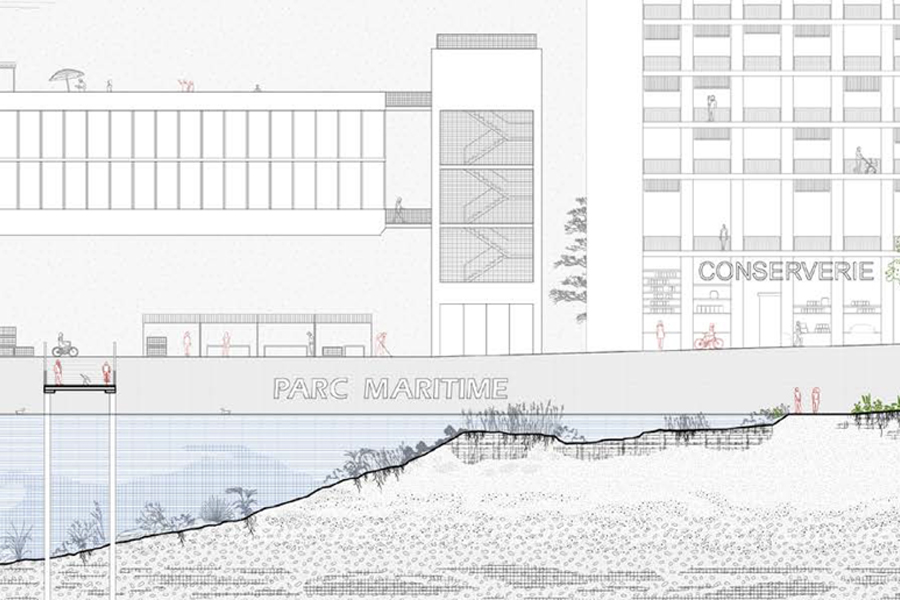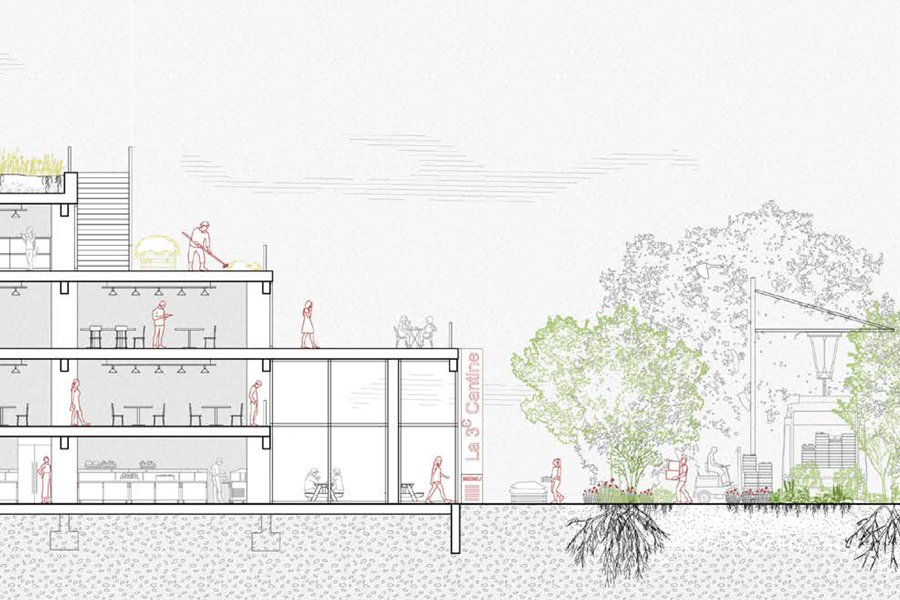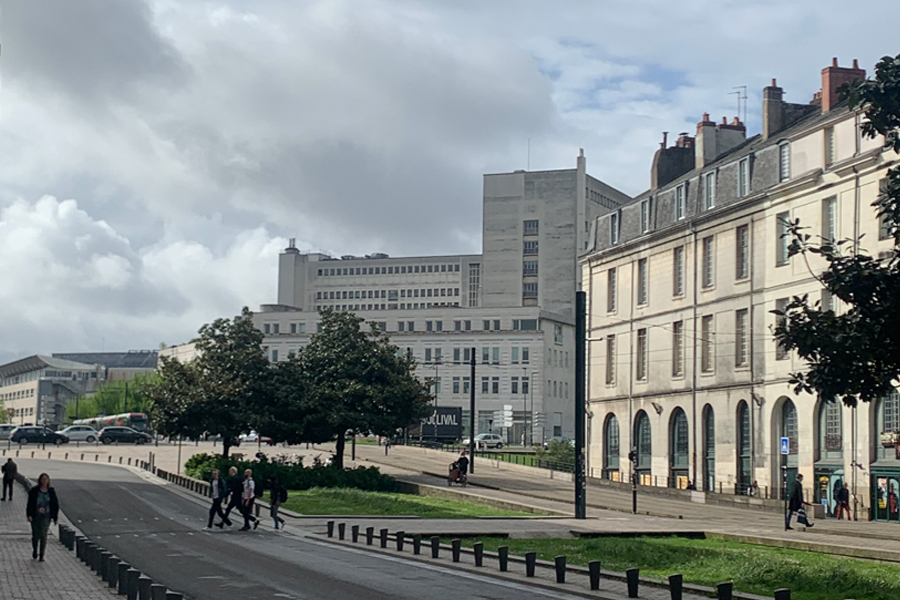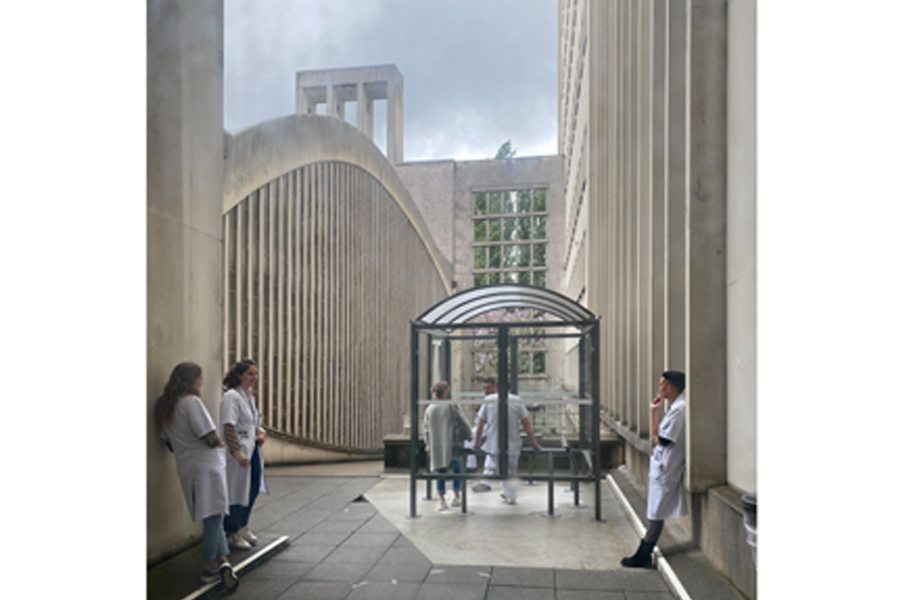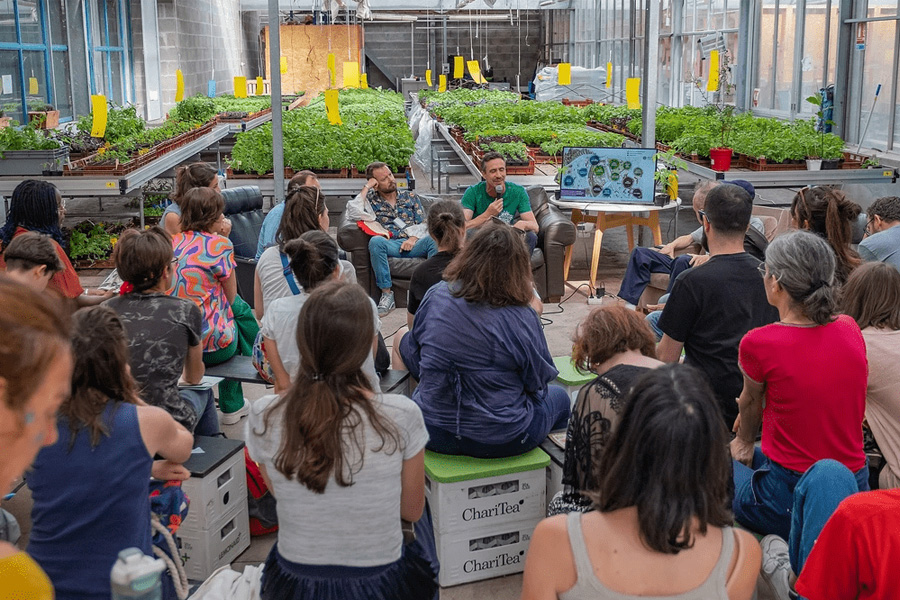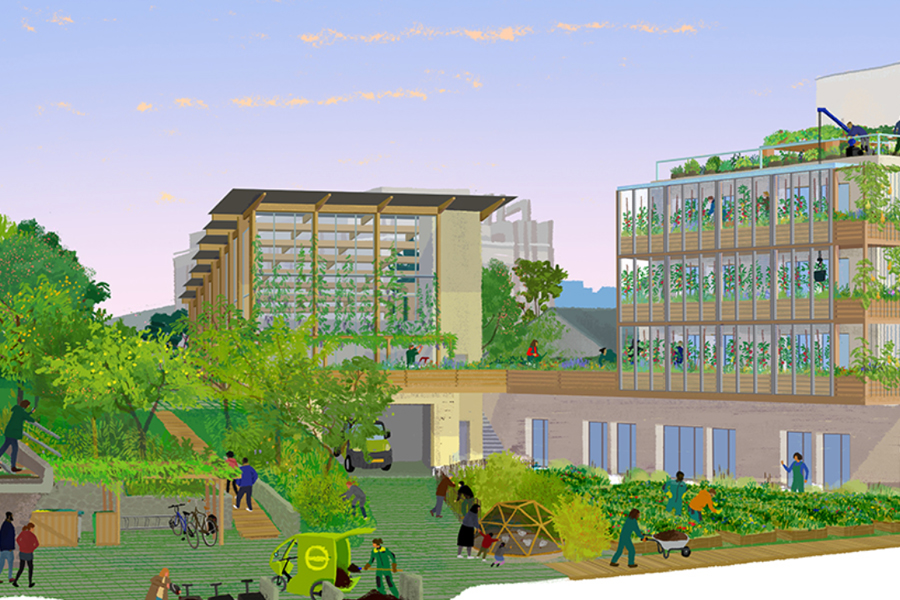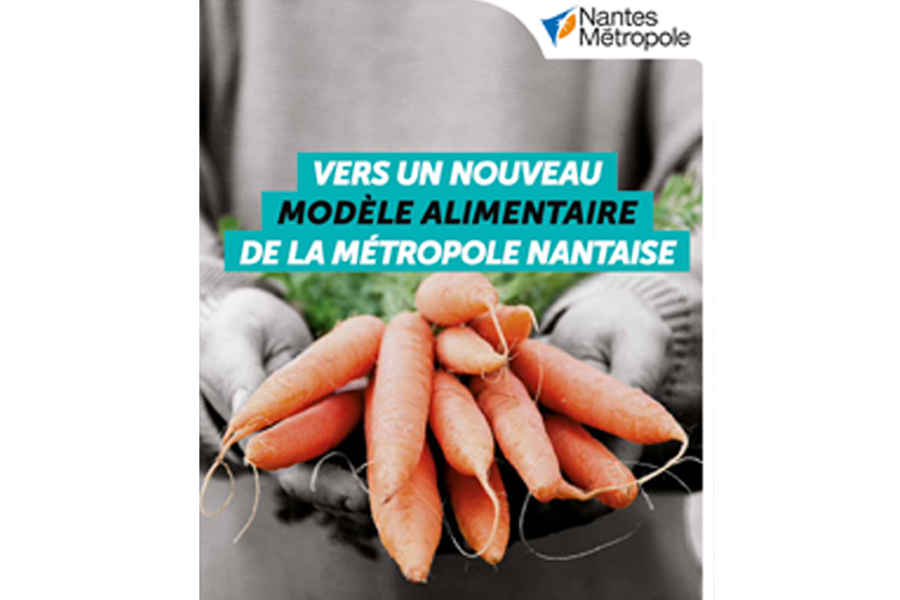PACTE ALIMENTAIRE LIGÉRIEN
Nantes (FR) - Mention Spéciale

TEAM PORTRAIT
VIDEO (by the team)
INTERVIEW
Click on the images to enlarge
1. How do you define the main issue of your project in relation with the theme “Living Cities Imagining architecture taking care of the milieus”? And in which way do you think your project can contribute to an ecological and/or social evolution?
Developing a food park in the city to promote local agriculture is a key to rethink a healthier and easy to access food model for Nantes, and falls within the Europan 17 theme. This long-term project combines ecological and social issues, consolidating existing policy and associative initiatives, envisaging new ways of living together and rethinking low-carbon logistics in the heart of the city.
2. How did the issues of your design and the questions raised by the site mutation meet?
In extension of the care activity inherent to the Hospital, the new nurturing district is structured by the renaturation of the land and a sober transformation of the existing buildings. These actions, combined over time, will restore the coherence of the block, integrate it into its immediate environment between the Loire and the city centre, and encourage the development of biodiversity in a dense urban area.
PROJECT:

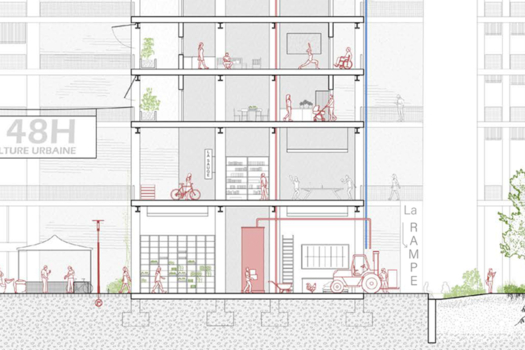

We have been working on the reconversion of anthropised sites at school or in the officie, that includes themes of resilience and frugality and in line with the subject of the competition. For this project we got acquainted with the dynamics of local associations in order to settle our proposal in a context. We also drew on references that raise the question of food in dense urban area.
SITE:



The gradual departure of the hospital's activities is an advantage when it comes to planning the conversion of the site to such a singular function. This long timeframe allows several programmes to be tested, with the involvement of local residents and associations, before establishing a more specific activity on site.
REFERENCES:



The three-member team is the result of meetings at school and in offices. Sullivan and Louise studied together at Ensapvs and had already collaborated on various projects and competitions. Matthias and Louise met in an office in Paris where they acquired experience on large-scale projects. In the meantime, Sullivan has developed skills in urban planning, particularly working on the development of the île de Nantes.
6. How could this prize help you in your professional career?
Working on this site, before winning a prize, gave us the opportunity to discover a dynamic and inspiring city. It would be a privilege for us to share our ideas with elected representatives, residents and the other winning teams to work towards a concrete project for this site.
TEAM IDENTITY
Legal status:
Team name:
Average age of the associates: 26 years old
Has your team, together or separately, already conceived or implemented some projects and/or won any competition? if so, which ones?
No.
